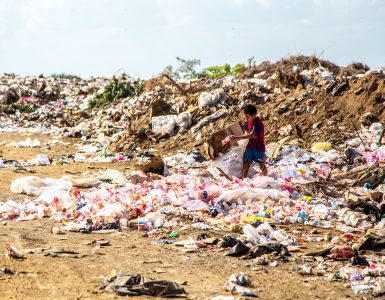“Delhi’s air quality slips to ‘very poor’ category; stubble burning contributes 14% to polluted air” – India Today, October 17, 2021
“Air quality in Delhi starts dipping; stubble burning in Punjab, Haryana less than last year so far” – The Indian Express, October 13, 2021
A few headlines from leading Indian news and media publications on Delhi’s severe air quality due to crop stubble burning. As per estimates, approximately 23 million tons of straw are burnt by the farmers in northern India from their rice harvests, especially in the months of September to November. The favorable wind direction from the north brings the polluted air to Delhi and its surrounding region, thereby impacting the air quality.
The impact is not only restricted to the environment, but the polluting air also impacts human health and causes damage to soil nutrients.
As per the Indian government’s response to the Supreme Court of India, stubble burning contributes only 10% of Delhi’s pollution. According to air-quality monitoring agency SAFAR, stubble burning in north Indian states accounts for 30% to 40% of air pollution in October and November.
Irrespective of the contradictions with regards to the percentage contribution of stubble burning to air pollution, the main point is that farm fires by farmers are a major problem, which needs attention and solution.
The Indian government even promoted seeder-based systems to manage crop residues within fields. In 2018, the government even established a fund to help farmers get rid of rice paddy straw by using machines. Under the plan, farmers can get a 50% subsidy to buy the machines for cutting, collecting, and hauling away compressed paddy straw. In spite of millions of rupees spent on this scheme by both state and central governments, the efforts did not result in the stopping of farm fires due to various factors.
In addition, bans, penalties, bio decomposers, and even putting farmers in jail in some places, many solutions have been tried by Indian authorities.
In spite of many efforts, stubble burning remains a huge challenge for Indian policymakers, authorities, and people at large. India would need bigger and long terms sustainable solutions to the crop stubble burning problem.
Solutions to the Crop Stubble Burning problem in India
First and foremost for any crop stubble burning solution to be effective, it has to place farmers at the forefront. If we expect, farmers to bear the cost of collecting, baling, and transporting the residue, burning will continue to happen as that will be the cheapest option available. If there is an incentive for farmers to leverage their agriculture waste for additional income, it will have widespread adoption.
Secondly, encouragement needs to be given to all the startups working in this space. In an earlier article, we have discussed a few Indian startups that are creating innovative products using agricultural waste. Their products are not only addressing the stubble-burning problem, but they also have the potential to solve many other environmental challenges, like plastic waste, emissions from construction, and dependency on fossil fuels. Unless the startups are provided with a sustained support system by the government authorities, the crop stubble-burning solutions by these Indian startups will remain minuscule in terms of their wider impact.
The third and most important thing which the Indian administration can consider is changing the practice of the rice-wheat cropping system and crop diversification. Post green revolution, India introduced the cultivation of rice in the wheat-dominated Indo-Gangetic Plains, to meet the food needs of its growing population. The rice-wheat cropping system presented a very small window for farmers between the rice harvest and wheat sowing. As removing the rice stubble left after the harvest is a costly and time-consuming exercise, stubble burning became the affordable option available for farmers to clear their fields and prepare them for wheat. Therefore if the farmers can be encouraged to diversify to more water-efficient crops such as maize, millets, and pulses instead of rice, it will not only help in reducing the water usage but also reduce the stubble burning problem.
Wrapping Up
The efforts are already underway, in the Indian Budget 2022 encouraged the usage of natural farming techniques and discouraged so-called chemical-based agriculture, with a first stage focusing on farmers’ land in 5 km wide corridors along the river Ganga. Additionally, in order to boost farmers’ income and address the issue of air pollution and stubble burning, the budget provides support to enable 5-7 percent co-firing of biomass pellets in coal-based thermal power plants.
To encourage Millet crops, the year 2023 is announced as the International Year of Millets. The Budget also made provisions to support post-harvest value addition, enhancing domestic consumption, and branding millet products nationally and internationally.






Add comment